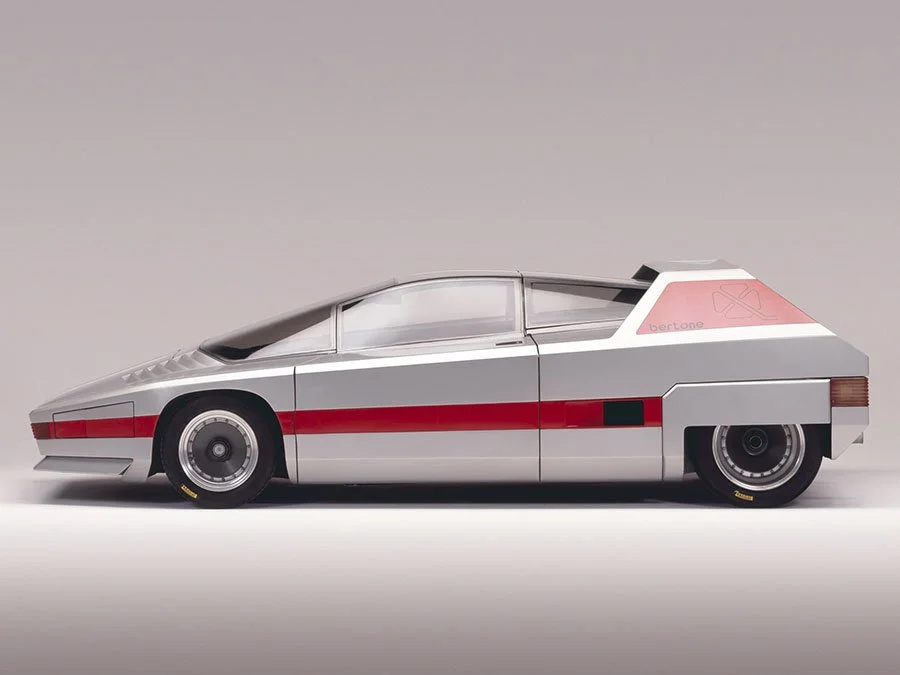Guide: Alfa Romeo Tipo 33 Stradale Bertone Navajo - a Historical & Technical Appraisal
/BACKGROUND
Five years after the last Tipo 33 Stradale-based concept, the sixth and final example was unveiled during March 1976 at the Geneva Motor Show.
Constructed on chassis 750.33.117, it was the second example to receive coachwork by Bertone after the trend-setting Carabo of 1968.
However, whereas the Carabo was beautiful, influential and innovative, this latest concept reflected the malaise of the period and gave an indication of how the wedge era would sometimes painfully evolve into the 1980s.
Named Navajo after a Native American tribe from the Southwestern United States, it came soon after Bertone had stopped producing shells for Alfa Romeo’s Montreal.
BODYWORK
The Navajo’s fibreglass body was a mix of straight lines and flat surfaces: it looked like something from a mid 1970s science fiction movie.
Much smaller than it appeared when pictured in isolation, the diminutive machine received a heavily tapered front end to minimise air resistance.
Retractable headlights were unusually mounted down each flank and the nose came equipped with an electric front spoiler the angle of which varied according to road speed.
A similar device was mounted on the rear wing which was itself located upon two huge trapezoidal panels emblazoned with Bertone script and the Alfa Romeo cloverleaf on a red background.
A matching red belly stripe wrapped around almost the entire car and was only interrupted by the partially shrouded rear wheels. The rims themselves were unventilated centre-lock split rim type and came shod with Pirelli P7 tyres.
Given Nuccio Bertone’s love of elaborate doors, it was a surprise to find those of the Navajo opened conventionally.
INTERIOR
Once inside, the most striking features were a single spoke steering wheel in front of a digital dash. There was no analogue instrumentation to speak of. All the major read outs were contained within the main binnacle.
Both seats were fixed in position and upholstered in grey fabric with red centres. Matching grey fabric was also used to upholster the rest of the interior.
There were inevitable similarities with Bertone’s other supercar concepts of the era including the 1974 Lamborghini Bravo and 1976 Ferrari 308 GT Rainbow.
By this time Bertone’s best work was in the past and the firm’s designs began to appear increasingly derivative as the 1980s dawned.
Like all the other Tipo 33 Stradale concepts, after its show career was over, the Navajo became part of Alfa Romeo’s Museo Storico where it remains to this day.
Text copyright: Supercar Nostalgia
Photo copyright: Alfa Romeo - https://www.alfaromeo.com & Bertone - https://www.bertone.it


































